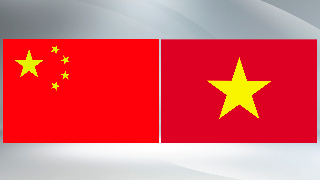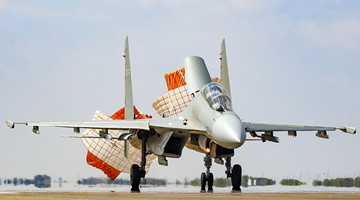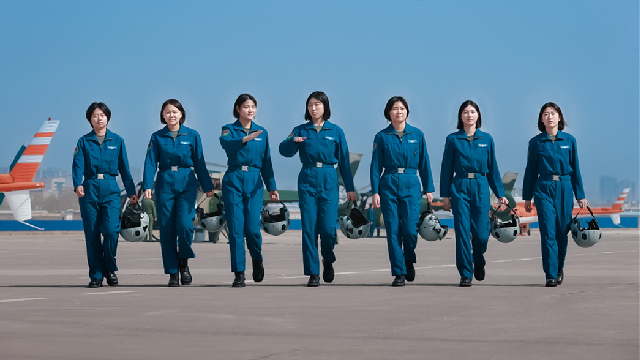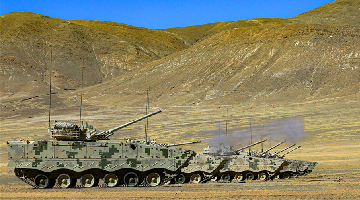By Lyu Desheng and Zhang Wenwen
The PLA Daily invited well-known experts, scholars and authoritative media in China to jointly select the top 10 international military news of 2022, which are listed in the order of vote numbers as follows.
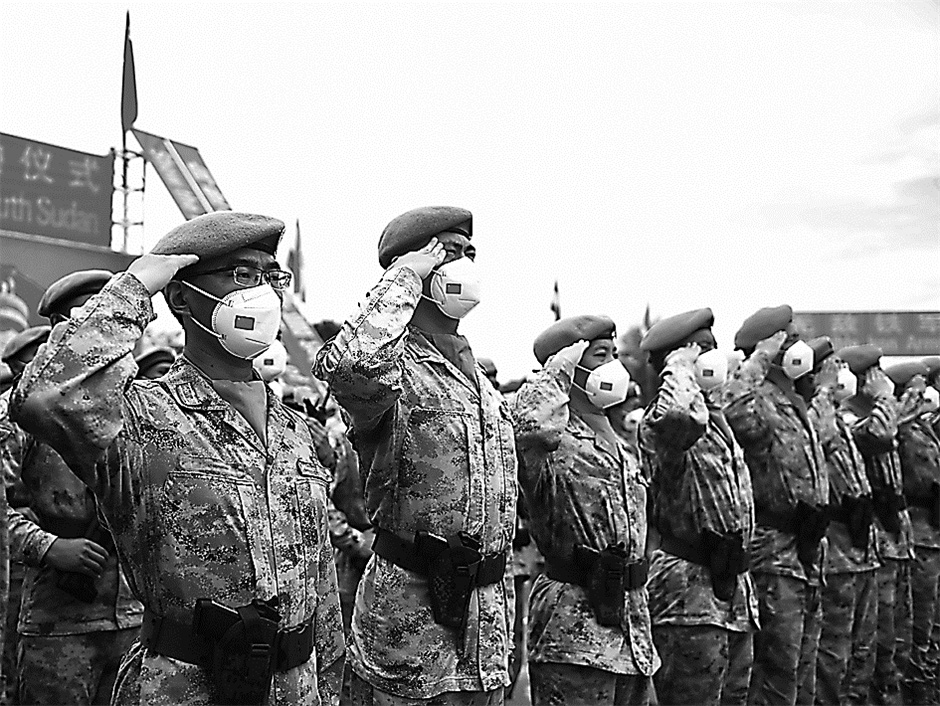
1. China proposes Global Security Initiative (GSI)
Chinese President Xi Jinping proposed the Global Security Initiative (GSI) at the opening ceremony of the Boao Forum for Asia Annual Conference 2022, which champions the commitment in six areas, follows the philosophy that humanity is an indivisible security community, and makes clear the core concept, fundamental guidelines, important principles, long-term goals and feasible approach of upholding and achieving global security.
The GSI has clearly answered the issue of the times, that is, "what kind of security concept does the world need, and how do countries achieve common security". It is a vivid practice of the concept of building a community with a shared future for mankind in the security field while reflecting China's wisdom and China's plan to make up for human peace deficits and address international security challenges. The initiative serves to inject confidence into the maintenance and realization of world security and is widely welcomed by the international community.
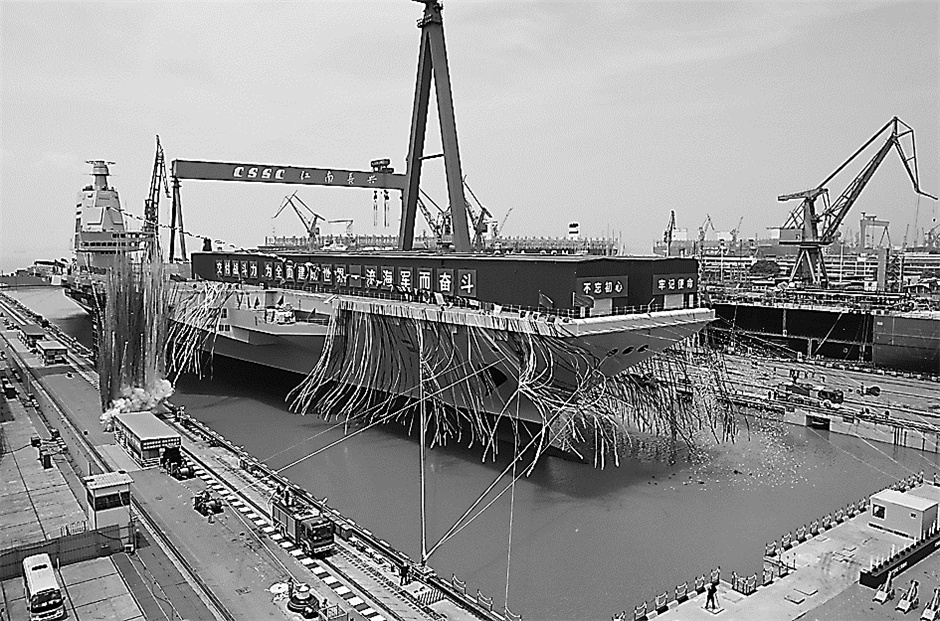
2. China launches its third aircraft carrier
The launching ceremony for China’s third aircraft carrier, the Fujian, was held at the Jiangnan Shipyard of China Shipbuilding Industry Corporation on June 17. Approved by the Central Military Commission (CMC), the third aircraft carrier of China was named after Fujian Province, that is, the PLA aircraft carrier Fujian with hull number 18.
Featuring flat flight deck, aircraft carrier Fujian is China’s first domestically designed and manufactured carrier, which is equipped with electromagnetic catapults and arresting devices uses catapults and has a full-load displacement of more than 80,000 tonnes. Over the past 10 years since the commission of China’s first aircraft carrier, Liaoning, in 2012, China has made significant progress in building its aircraft carrier fleet, achieving the upgrading from scratch, refitting to domestic design and manufacture, from ski-jump to catapult, and having entered the era of “three aircraft carriers”.
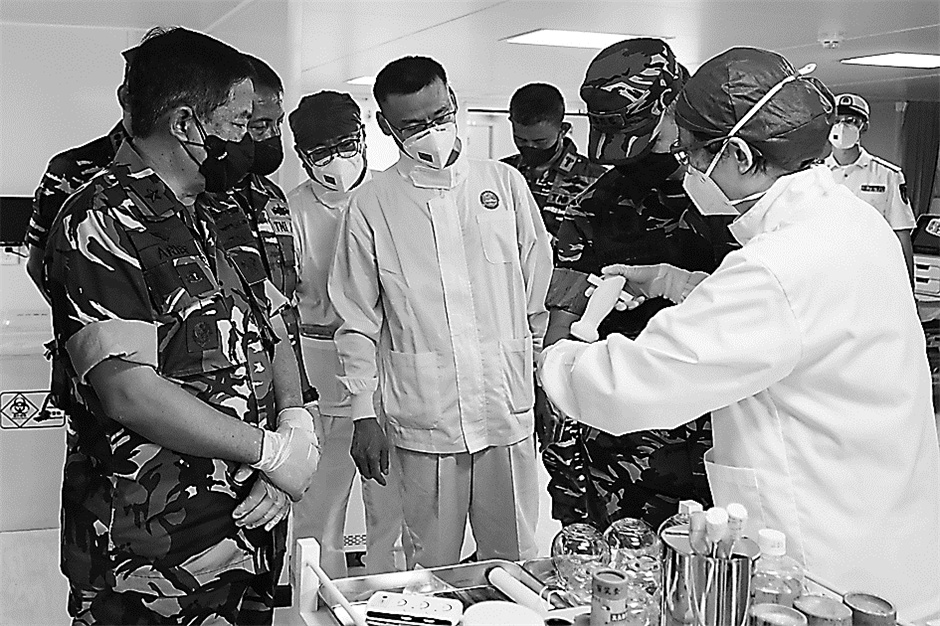
3. Chinese military involved in multiple international humanitarian relief operations
The Chinese military delivered humanitarian relief materials to Tonga, Afghanistan and Pakistan struck by volcanic eruptions, earthquakes and floods respectively in January, June and August. In November, the PLA Navy’s hospital ship Peace Ark (Hull 866) headed to Indonesia to carry out the “Mission Harmony-2022”.
The report to the 20th National Congress of the Communist Party of China pointed out that achieving the goals for the centenary of the People’s Liberation Army in 2027 and more quickly elevating our people’s armed forces to world-class standards are strategic tasks for building a modern socialist country in all respects. China is committed to pursuing peaceful development. It has developed itself by upholding world peace and maintained world peace through development. The Chinese armed forces have the confidence and the ability to make yet greater contributions to world peace and development.
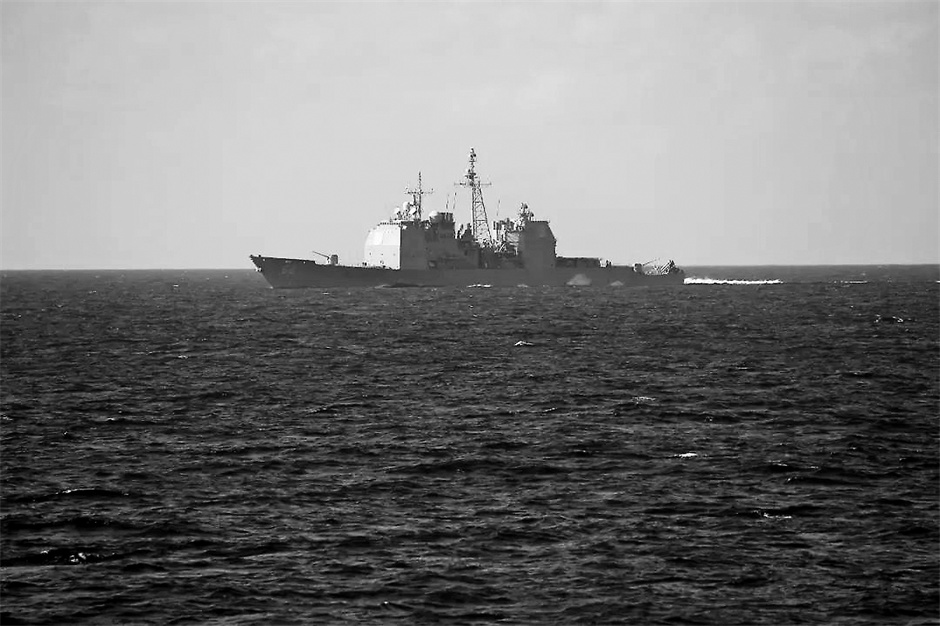
4. US issued several reports that undermine global strategic stability
The US released the Indo-Pacific Strategy of the United States on February 11, the National Security Strategy on October 12, the National Defense Strategy, the Missile Defense Review, and the Nuclear Posture Review on October 27.
These reports issued by the United States have played up the prospects of confrontation with an attempt to continue to seek absolute military superiority and maintain its hegemony by creating imaginary enemies. The move has seriously undermined the international security order and global strategic stability. The new version of the US National Defense Strategy regards China as "the most consequential strategic competitor" and "most pressing strategic challenge facing the US". These reports reflect that the US' mentality has still stuck in the old era featuring cold war confrontation and a zero-sum game.
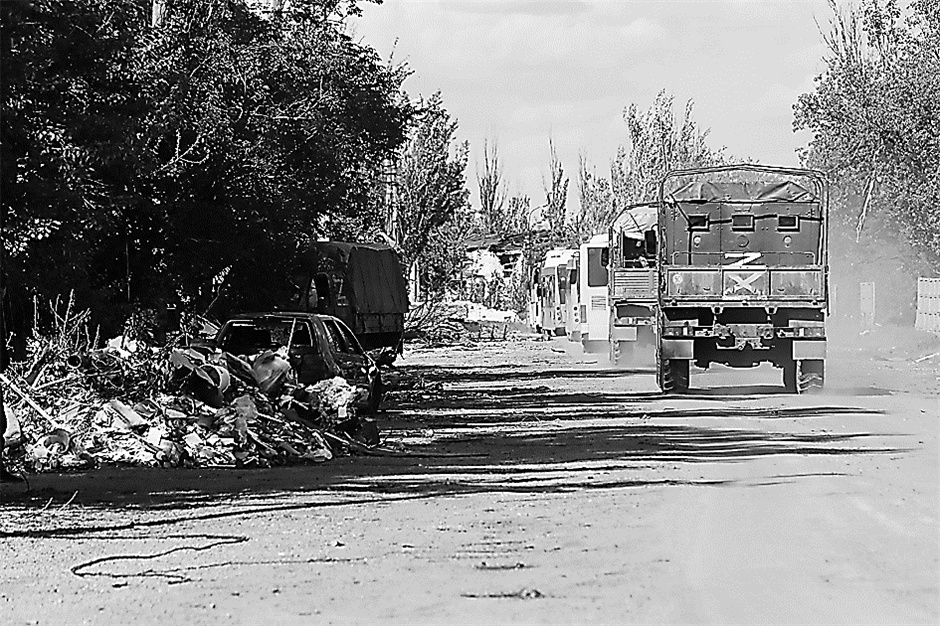
5. Russia launches special military operations against Ukraine
On February 24, Russia announced that it would carry out a special military operation in the east of Ukraine. On March 25, the Russian Ministry of Defense said that the main tasks of the first stage of the special military operation had been completed. In September, Russian President Vladimir Putin announced a “partial mobilization”.
The Russia-Ukraine conflict is the largest-ever military conflict in Europe in the 21st century, which has intensified the geopolitical confrontation across the world, and worsened the regional security environment, with spillover effects spreading across the globe. The occurrence of conflict has been a result of various factors as a whole and also an outbreak of conflicts accumulated over the years, with the root cause lying in the security problems in Europe. The United States and Europe have provided huge military assistance to Ukraine and continued to "add fuel to the fire".
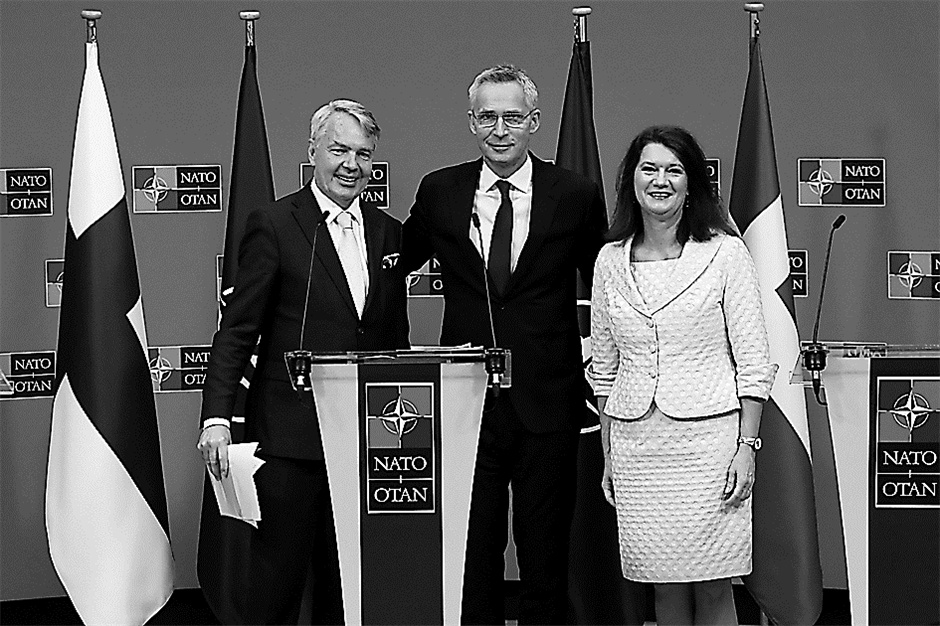
6. NATO officially launches the process of northward expansion following the new strategic concept
The 2022 Strategic Concept was adopted at the NATO Summit in Madrid on June 29, declaring Russia the "most significant and direct threat" and falsely claiming that China has posed a "systematic challenge" to European security. Representatives of 30 NATO member states signed the Accession Protocols for Finland and Sweden on July 5.
NATO has repeatedly expanded eastward after the cold war, forcing Russia into a corner step by step. This has served to bury the seeds of conflict, instead of making Europe safer. The so-called strategic concept of NATO is flooded with confrontation, zero-sum mentality and ideological prejudice, and tries to woo countries like Japan and the ROK into building an Asia-Pacific version of NATO. If NATO could expand northward as planned, its confrontation with Russia is sure to be intensified, then leading to further deterioration of the security situation in the Baltic Sea region and even in Europe as a whole.
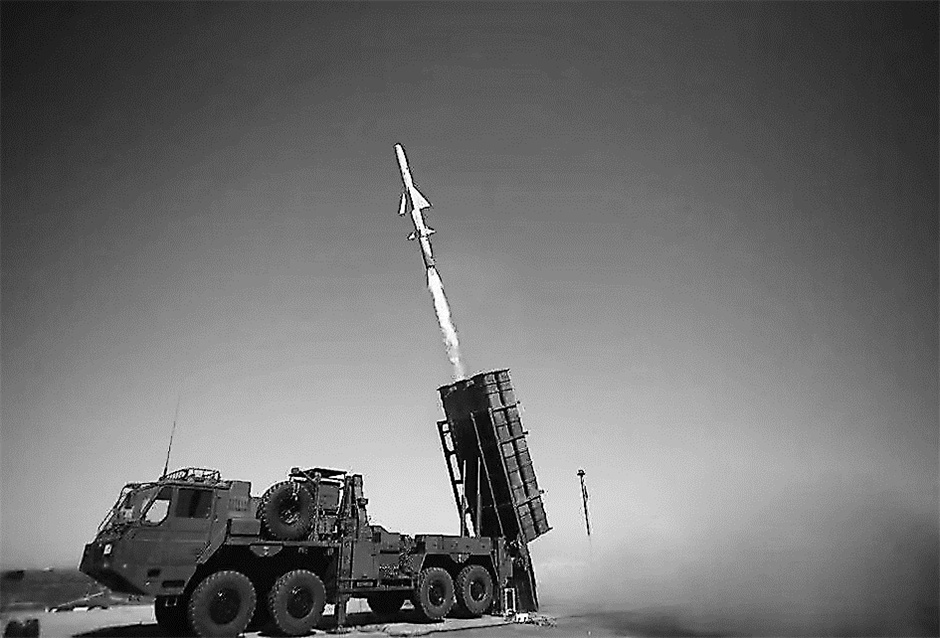
7. Japan's defense policy highlights "counterattack capability" while deviating from move from “exclusive defense orientation"
On December 16, the Japanese government officially approved three security and defense-related documents, that is, the National Security Strategy (NSS), the National Defense Strategy (NDS), and the Defense Buildup Program (DBP) . Japan is striving to break through the multiple post-WWII restrictions and develop its so-called counterattack capability, that is, "the capability to launch attacks on enemy bases".
Japan's defense policy has grown more and more aggressive in recent years. In fact, the three documents have actually abandoned the post-WWII exclusive defense-oriented strategy that Japan has followed for many years, rendered Japan's pacifist constitution unfeasible, and disclosed Japan's ambition to seek complete military relaxation. The major turn in the security and defense strategy has aroused the concern of the international community that Japan may embark on its old path of military expansionism again.

8. UAV turns to be a new hotspot in military competition
Countries including the United States, Russia, and Turkey have launched many new-model UAVs since early this year. Many UAVs have been put into warfare like the Russia-Ukraine conflict and the civil strife in Ethiopia, and have had a profound impact on the operational process. UAVs have turned out to be an important direction of future military equipment development
UAVs, as an emerging air combat force, are capable of intelligence, surveillance and reconnaissance while providing precise firepower support. Featuring zero casualties, non-contact, and long-range operations, UAVs have attracted more and more attention from multiple countries, becoming the changer of modern war rules and a new hotspot in military competition. In the future, the global UAV R&D and procurement expenditure may witness a blowout-type growth.

9. The US speeds up its space militarization
The US Space Force announced the establishment of its first regional command in Hawaii: the US Space Forces Indo-Pacific on November 22. On December 2, the US Space Exploration Technologies, commonly known as SpaceX, officially released the "Starshield" satellite services designed for government use to support national defense and intelligence.
The establishment of regional command in the US military means that its space forces will be fully integrated into the joint theater operation sequence. The Russia-Ukraine conflict has proved that the so-called "Starlink" system has never been merely a "civilian" project. The "Starshield" project built on the "Starlink" system, further demonstrates the ambition of the US to seek hegemony in space, which will further aggravate space militarization, and is worthy of high vigilance by the international community.
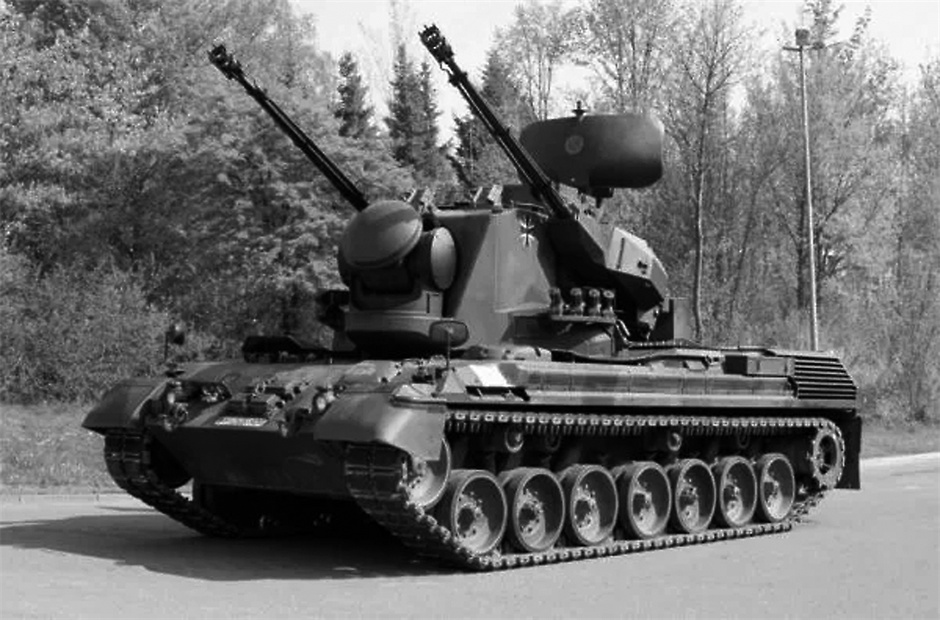
10. Germany's defense policy undergoes dramatic changes
Germany's Bundestag, the lower house of parliament, significantly ramped up defense spending at first, committing a special fund of 100 billion euros for armament projects on June 3, and announcing to up its defense budget to over 2% of the GDP every year earlier as required by the NATO. Germany has publicly sent air-defense and anti-tank lethal weapons, to the war zone for the first time.
According to the plan, the special fund of 100 billion euros is mainly used for the procurement of large equipment as required by projects. Although Germany's move is under the banner of making up for its historical debts, Germany's departure from the decades long culture of "military restraint" and "pacifism" after World War II is, from the outside world's perspective, not only to deal with the security pressure brought by the Russia-Ukraine conflict, but also to enhance its own and the EU's "strategic autonomy", which is bound to be of significant impact to the European military and political landscape.






